Save the Orangutan visited the Nyaru Menteng rehabilitation centre in Borneo in connection with our annual meeting with our Indonesian partner BOS Foundation and our international BOS-partners. At Nyaru Menteng, our supporters’ donations help make a difference for the 385 orphaned and displaced orangutans in their care. We attended this years’ partner meeting at BOS Foundation’s other rehabilitation centre, Samboja Lestari in East Kalimantan, and we went to visit the Nyaru Menteng rehabilitation centre afterwards.
The partner meetings are held to focus our joint efforts and to inspire and coordinate future efforts and projects. This year’s meeting was held at Samboja Lestari, the oldest of BOS Foundation’s two rehabilitation centres. Samboja Lestari is in the East Kalimantan region. After the meeting, we visited the Nyaru Menteng centre in Central Kalimantan.
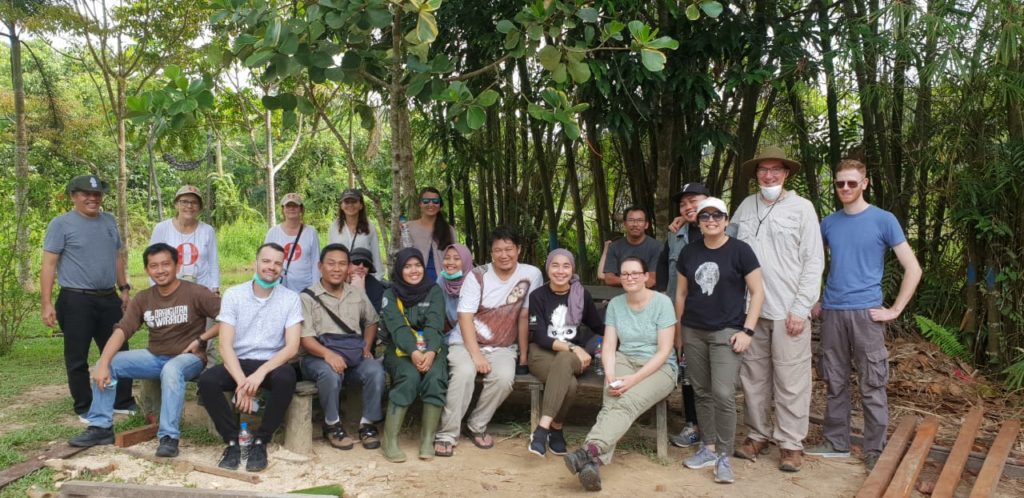
“It is a long way to Borneo, but the trip is definitely worth it. We have been able to discuss strategies and possibilities and share experiences face to face. We have combined our visit with concrete project visits and programme meetings around Borneo. As always, our hope is renewed when we meet so many dedicated people who share our goal in this world: to save and protect the magnificent but critically endangered orangutans,” director of Save the Orangutan, Hanne Gürtler explains.
Visits and brainstorm at Nyaru Menteng
Save the Orangutan remains the largest donor to the Nyaru Menteng rehabilitation centre. Together, we care for and rehabilitate orphaned and displaced orangutans and hope to reintroduce them to the rainforest one day.
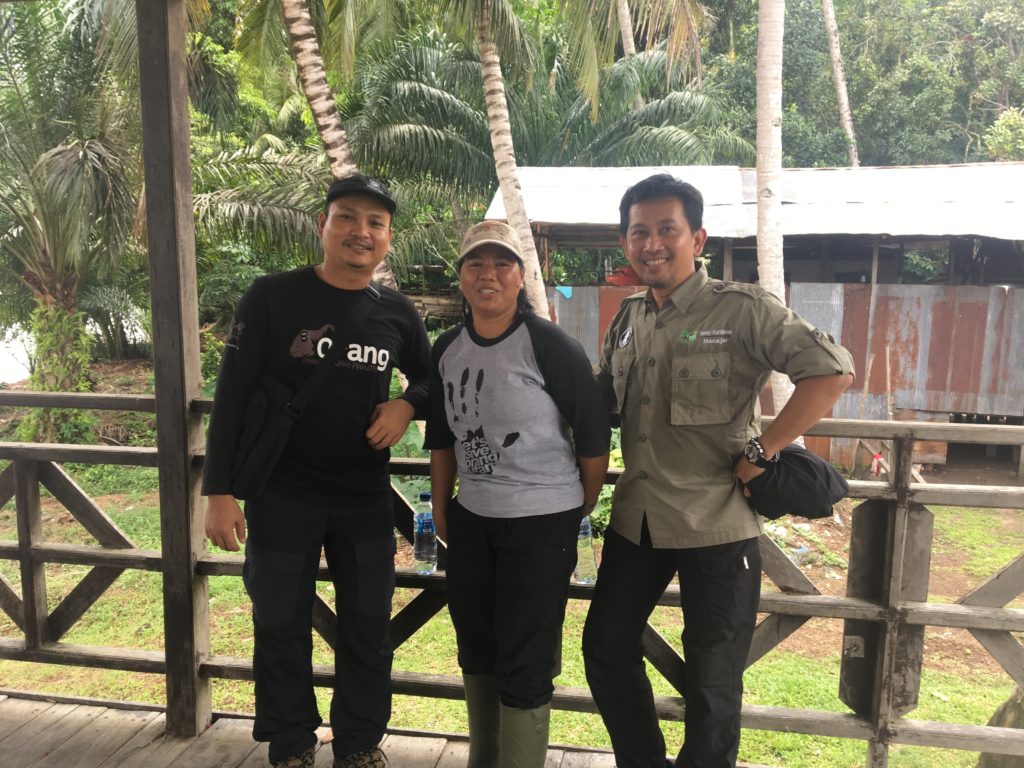
We met with the daily manager of the Nyaru Menteng centre, and the key people responsible for the rehabilitation programme and animal welfare at the centre including the necessary facilities.
“It is comforting to see and learn how far these people are willing to go to provide the best possible conditions for the orangutans. We have discussed both simple and complex topics and we have brought home a list with wishes for improvements. Moreover, experiencing how the staff cares for the orangutans and teaches them how to survive on their own in the wild in the future is always impressive. There is a fine line between support, care, and respect for their wild nature,” Hanne Gürtler says.
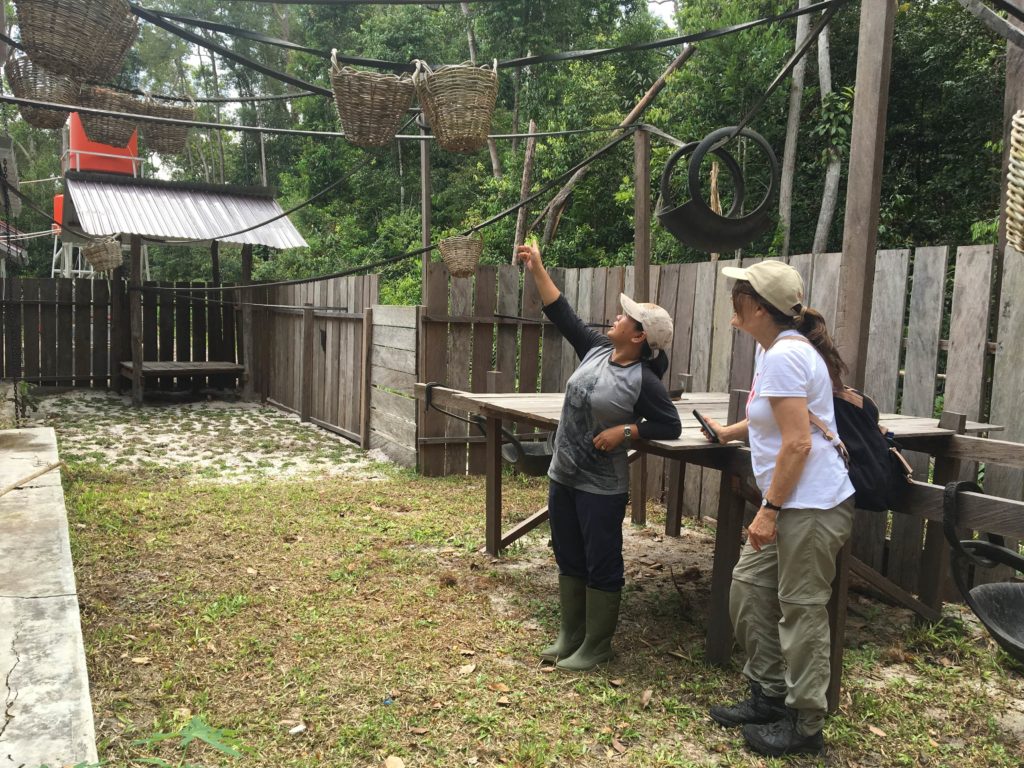
New playground and surprises
During our visit, we had the opportunity to see the new playground, which we raised funds for in the spring. The playground near the Baby School had been opened and was in use. We saw how they had actually made it into two separate areas: one area for the quarantined orangutans who cannot go to Baby School during the day, and one for the orangutans coming home from Baby School in the afternoon.
As an added bonus, the raised funds also financed new plank paths from the Baby School to a new forest area. The orangutans and the babysitters go to this new forest area every day as part of their rehabilitation.
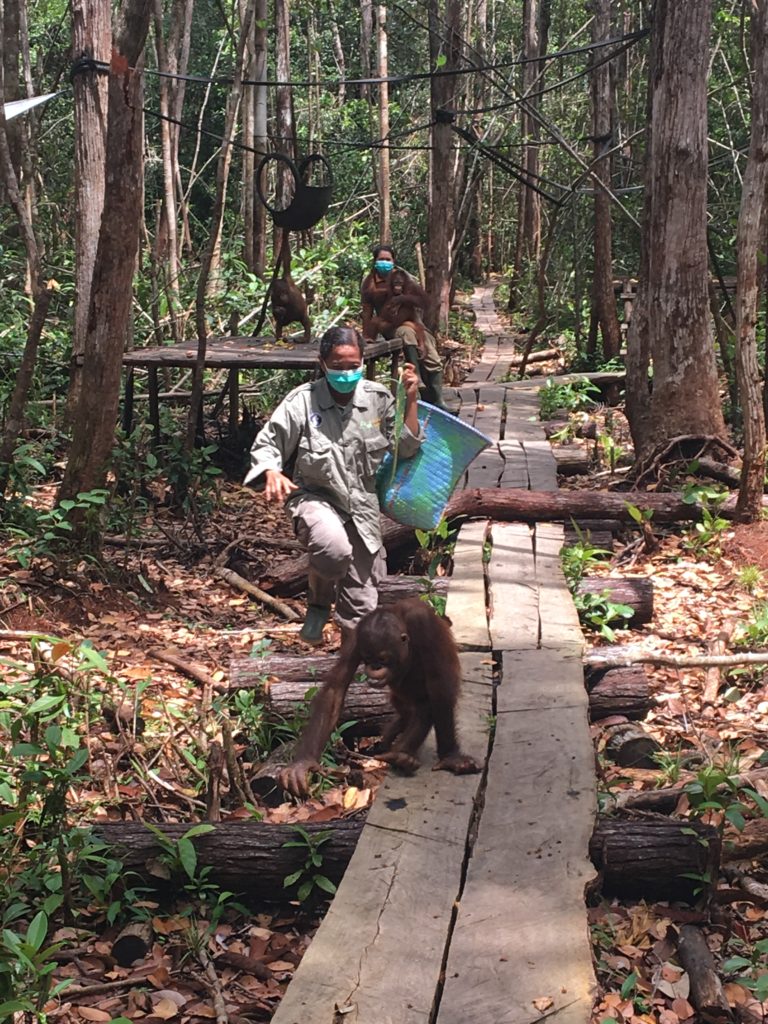
Miko, Jossy, and Ben
We also got to see Miko, Jossy, and Ben. Today, they are kept in socialisation cages until it is their turn to initiate the last phase of their rehabilitation process on the pre-release islands. And it will not be long before they are moved onto the islands. The staff expects the move to happen before the end of 2018 or in the beginning of 2019.
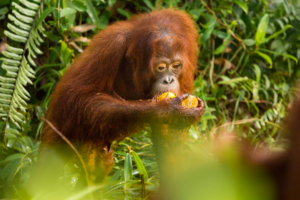
Nody, Grendon, and other old favourites
During our visit, we were also told stories and were updated about some of the orangutans who used to be in Save the Orangutan’s adoption programme.
Nody, a 13-year-old male orangutan was released as orangutan number 100 in the TNBBBR nationalpark on the 15th of August this year. The staff explained that he had been monitored closely in the first two weeks, but he had quickly moved out of the monitoring team’s range. This is good sign as it is natural male orangutan behaviour to move large distances every month. Well done Nody!
Grendon, another old favourite, has been moved to the pre-release island Kaja Island several times. Grendon is sly and maybe a bit too eager to be reintroduced to the wild. The technicians from Nyaru Menteng explains that he often looks for and finds shortcuts off of the island. They have therefore had to bring him back to the protected island several times. Because of this, they have now put a radio signal on him.
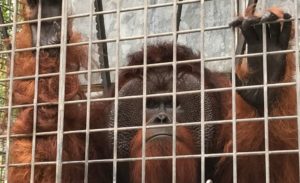
Focusing our efforts to free the orangutans from their cages
In 2018, the releases of rehabilitated orangutans from Nyaru Menteng have gone according to plan. BOS Foundation’s general goal of rehabilitating the orphaned and displaced orangutans remains unchanged: to release all orangutans capable of surviving in the wild after completing their rehabilitation process.
However, some orangutans can never be reintroduced to the wild. These orangutans also deserve a life in freedom, and we agree that we need to find permanent sanctuaries true to nature for them quicker. Since 2017, Save the Orangutan and our partners have focused on speeding up the process of freeing all orangutans at the rehabilitation centres from their cages. Fortunately, the first permanent sanctuary for un-releasable orangutans have already been opened. And more will soon follow suit. Save the Orangutan and our German BOS-partner have recently donated funds to purchase access rights to 15 hectares of land for this purpose.
We are looking forward to follow up on our visit and to continue our work to help even more orangutans live a free life with the help of our many supporters.